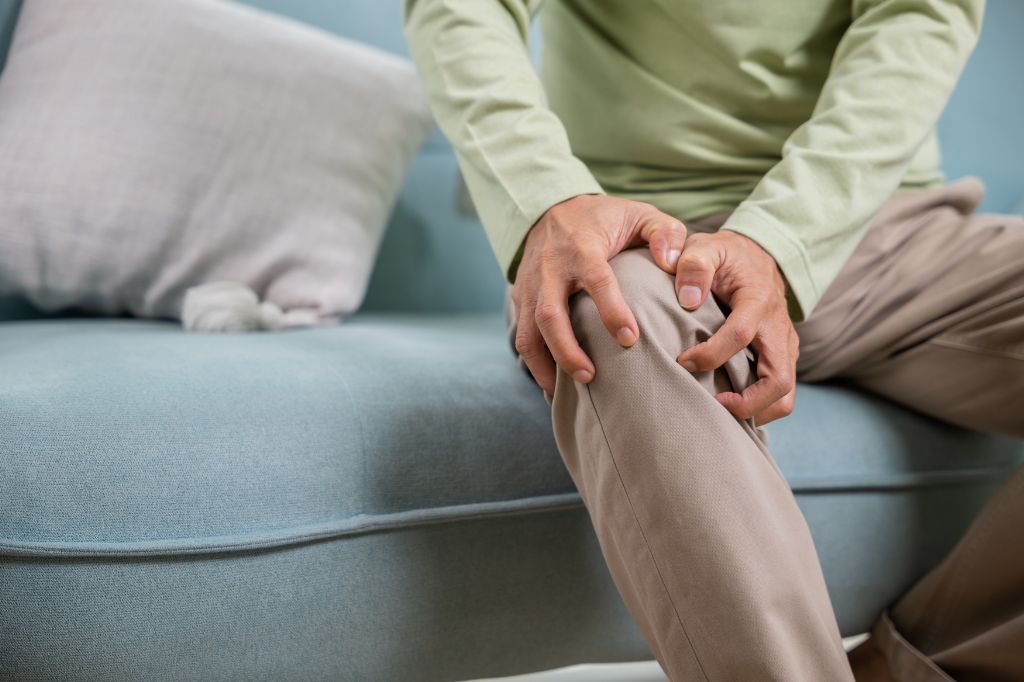
Knee osteoarthritis is a common condition that develops when the cartilage cushioning the knee joint wears down over time, leading to pain, stiffness, and reduced mobility. This degenerative joint disease affects millions of people, particularly those over the age of 50, but it can occur earlier due to factors like injuries, repetitive strain, or genetics. Early diagnosis and treatment can significantly slow the progression of knee osteoarthritis and improve your quality of life.
What is Knee Osteoarthritis?
According to research, about 13% of women and 10% of men aged 60+ have knee osteoarthritis. This condition occurs when the cartilage that cushions the ends of the bones in the knee joint deteriorates. This cartilage acts as a shock absorber and allows smooth movement of the joint. As the cartilage wears away, the bones may begin to rub against each other, causing pain, inflammation, and stiffness.
Over time, knee osteoarthritis can lead to further complications, such as the formation of bone spurs or the narrowing of the joint space, which limits mobility. Recognizing the early warning signs can make a big difference in managing the condition effectively.
6 Early Signs of Knee Osteoarthritis You Shouldn’t Ignore
Knee osteoarthritis often starts gradually, with mild symptoms that may be easy to dismiss. However, addressing these early signs can prevent the condition from worsening.
1. Persistent Knee Pain
One of the earliest and most noticeable symptoms of knee osteoarthritis is pain in or around the knee joint. This pain may start as a mild ache after activity, such as walking or climbing stairs, and can gradually become more frequent. You may also notice pain after periods of inactivity, like sitting for long periods or waking up in the morning.
Why It Happens: As cartilage breaks down, the bones in the knee joint begin to rub against each other, causing pain and inflammation.
2. Stiffness in the Knee
Knee stiffness, especially in the morning or after sitting for a while, is another common early symptom. While the stiffness may improve with movement, it can become more persistent over time if left untreated.
Why It Happens: Inflammation and cartilage wear reduce the knee joint’s ability to move smoothly, leading to a feeling of tightness or stiffness.
3. Swelling Around the Joint
Swelling in the knee joint is often one of the first signs of inflammation caused by osteoarthritis. This swelling may be accompanied by warmth or tenderness around the knee.
Why It Happens: As the cartilage deteriorates, the body produces extra fluid in the joint to try to protect it, leading to swelling.
4. Grinding or Popping Sensation
You might notice a grinding, clicking, or popping sound when you move your knee. This sensation, called crepitus, occurs as the joint surfaces become rough and the cartilage no longer cushions the bones effectively.
Why It Happens: The loss of cartilage leads to friction between the bones, causing noise and a grinding sensation.
5. Decreased Range of Motion
In the early stages of knee osteoarthritis, you may find it harder to bend or straighten your knee fully. Over time, this reduced range of motion can affect your ability to perform everyday activities like walking, climbing stairs, or getting out of a chair.
Why It Happens: Inflammation, joint fluid buildup, and cartilage loss make it more difficult for the joint to move freely.
6. Knee Instability
Some people with early knee osteoarthritis experience a sensation that the knee might “give out” or feel unstable during movement. This can make walking or bearing weight on the affected knee more challenging.
Why It Happens: Weakness in the muscles surrounding the knee and damage to the joint can reduce stability.
What to Do if You Notice These Symptoms
If you’re experiencing any of these early signs of knee osteoarthritis, it’s important to seek medical advice. At Orthopedic Specialty Institute, we specialize in diagnosing and treating knee osteoarthritis to help patients maintain mobility and reduce pain. Here’s what you can do to take control of your knee health:
Get a Professional Diagnosis
Your doctor can perform a physical exam, assess your symptoms, and recommend imaging tests like X-rays or MRIs to confirm whether you have knee osteoarthritis. Early diagnosis is crucial for creating an effective treatment plan.
Adopt Healthy Lifestyle Changes
Making simple lifestyle adjustments can help slow the progression of knee osteoarthritis:
- Weight Management: Carrying extra weight increases stress on the knee joints. Losing even a small amount of weight can reduce pressure and improve symptoms.
- Low-impact Exercises: Activities like swimming, cycling, or yoga can help strengthen the muscles around the knee without putting excessive strain on the joint.
Consider Physical Therapy
A physical therapy program can improve flexibility, strengthen the muscles surrounding the knee, and reduce pain. At Orthopedic Specialty Institute, we design customized physical therapy plans tailored to your specific needs.
Explore Medications or Injections
Over-the-counter pain relievers, such as acetaminophen or ibuprofen, can help manage pain and inflammation. Your doctor may also recommend corticosteroid, hyaluronic acid or Viscosupplementation/Gel injections for more targeted relief.
Use Supportive Devices
Wearing a knee brace or using assistive devices like a cane can help reduce pressure on the joint and improve stability.
When Surgery Becomes an Option
While early treatment can significantly improve symptoms and slow the progression of knee osteoarthritis, there may come a point where knee surgery is necessary. Options like partial or total knee replacement can restore mobility and eliminate pain in advanced cases.
At Orthopedic Specialty Institute, our team is here to guide you through every step of the treatment process, whether it involves non-surgical options or advanced surgical care.
Don’t Ignore the Signs of Knee Osteoarthritis
Knee osteoarthritis can start as mild discomfort but progress to significantly impact your quality of life if left untreated. By recognizing the early signs and seeking care promptly, you can take control of your knee health and maintain an active, pain-free lifestyle.
If you’re experiencing any of the symptoms of knee osteoarthritis, contact Orthopedic Specialty Institute today to schedule an appointment. Our team of specialists is here to provide personalized care and help you find the best treatment plan for your needs. Let us help you get back to the activities you love, pain-free.
